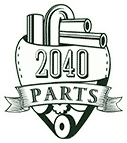300w Spot 30° Beam Led Alloy Work Light Bar 4wd 4x4 Van Ute Suv Lamp Dc10~30v on 2040-parts.com
guangzhou, CN
LED Lights for Sale
 2x hot 10w cree led work light flood beam lamp offroad car truck boat utb cab(US $51.99)
2x hot 10w cree led work light flood beam lamp offroad car truck boat utb cab(US $51.99) Lot 10x 6 smd 5050 led panel bright white dome door light car interior lamp(US $12.49)
Lot 10x 6 smd 5050 led panel bright white dome door light car interior lamp(US $12.49) 3528 smd white 300 leds 5m non-waterproof flexible led car auto strip light lamp(US $0.15)
3528 smd white 300 leds 5m non-waterproof flexible led car auto strip light lamp(US $0.15) 2 x 194/168/t10 super white 1w hi power smd led license plate/side/parking light(US $4.19)
2 x 194/168/t10 super white 1w hi power smd led license plate/side/parking light(US $4.19) New 5pcs 24cm 12v 24led flexible strip blue light waterproof lamps for car bulbs(US $8.99)
New 5pcs 24cm 12v 24led flexible strip blue light waterproof lamps for car bulbs(US $8.99) 80w 8000lm cree led spot flood combo work light offroad lamp car atv suv cab 4x4(US $135.99)
80w 8000lm cree led spot flood combo work light offroad lamp car atv suv cab 4x4(US $135.99)
Ford supercars
Tue, 29 Jul 2008By 29 July 2008 09:00 The Blue Oval might be more at home building Escorts and Mondeos, but it too has dabbled in the superecar arena in the past four decades. And considering the company's main engineering focus, the two supercars it has built both qualify for CAR's landmark supercar status. The original GT40 was a rude shock to Maranello and took a string of racing victories home as proof; the newer GT was equally adept and more than one magazine placed it ahead of its Italianate contemporaries.
Fisker Atlantic: Project Nina arrives early UPDATED
Mon, 02 Apr 2012Fisker Atlantic - formerly Project Nina Fisker Atlantic is the baby Karma – know as Project Nina – and we have the first leaked photo ahead of a New York Motor Show debut. Update: We’ve now got official photos of the Fisker Atlantic in the gallery below. We now know that the baby Fisker Karma we’ve known until now as ‘Project Nina’ will be the Fisker Atlantic, and now we also know what it looks like thanks to a Czech Auto Forum.
Pagani releases Huayra documentary [w/video]
Tue, 13 Mar 2012Italian manufacturer Pagani has put together a 14-minute documentary tracking the development of its new Huayra supercar. The short film heads to the companies that help to make the carbon and titanium-bodied Huayra, such as Italian company ASPA that creates the car's logo for an entire day out of a solid block of aluminum. The finer points of the design and development of the 230 mph car are also explored, as well as detailing how Leonardo Da Vinci inspired Horacio Pagani's original design.

